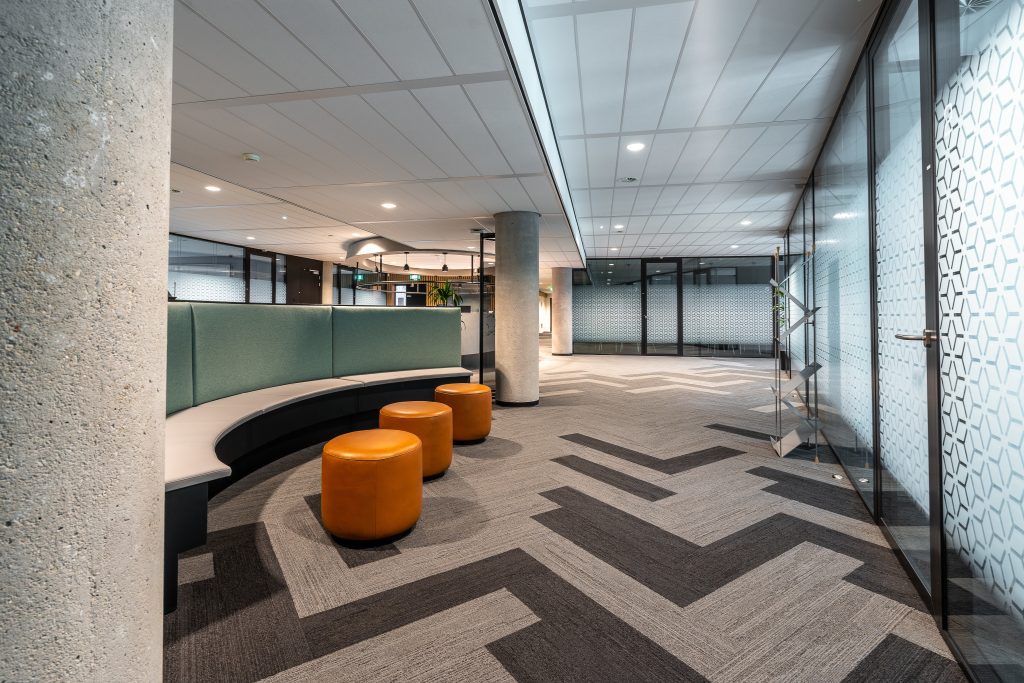Table of Contents
Open-plan offices are great for collaboration but can be a nightmare when it comes to concentration. The constant chatter, ringing phones, and tapping keyboards can reduce productivity and cause fatigue. Thankfully, modern noise-canceling solutions can transform your workspace into a quieter, more focused environment.
This guide explores how different methods and technologies work to block or reduce sound in offices, helping teams stay productive and stress-free.
Why Noise Control Matters in Offices
Noise pollution in workplaces isn’t just annoying—it directly affects employee performance and well-being. Studies show that noise can lower focus, increase stress levels, and lead to communication errors. For businesses, that translates into reduced output and higher turnover.
Investing in noise control solutions doesn’t just make employees happier—it pays off in efficiency and overall morale.
Noise Control Solutions for Offices
Acoustic Panels and Wall Treatments
Acoustic panels absorb sound waves to prevent them from bouncing around the room. They’re one of the simplest and most effective ways to reduce echo and background noise in offices.
There are many types of acoustic panels, including:
- Fabric-wrapped panels: Ideal for walls and ceilings, they come in various colors and designs.
- Foam panels: Lightweight and affordable, but better suited for small rooms or private offices.
- Wood-finish acoustic panels: Combine visual appeal with sound-absorbing power for conference rooms or executive spaces.
For best results, install panels on flat, reflective surfaces—like behind desks, near glass partitions, or along hallways.
Sound Masking Systems
Sound masking doesn’t block noise—it adds a layer of neutral background sound that makes conversations and distractions less noticeable.
A network of speakers emits a soft, consistent sound (like airflow or white noise) that blends speech and ambient noise. This reduces the perception of unwanted sounds and enhances privacy.
The benefits include:
- Improved focus and speech privacy
- Easy to install in both open and private areas
- Adjustable volume for different zones or departments
Noise-Canceling Headphones

For individuals who need deep focus, noise-canceling headphones are a personal and portable solution. They use active noise control technology to counteract external sounds.
To find the best noise-canceling headphones, look for the following features:
- Active Noise Cancellation (ANC) for blocking low-frequency sounds
- Comfortable ear cushions for long working hours
- Transparency mode to stay aware of surroundings when needed
- Bluetooth connectivity for seamless use across devices
This is perfect for employees in open workspaces or shared offices who need to block distractions during calls or deep work sessions.
Office Layout and Design Adjustments
Sometimes, the best noise-canceling solution is simply a better office design. Some practical adjustments include the following:
- Use partitions or screens between desks
- Create quiet zones or phone booths
- Add rugs and soft furnishings to absorb sound
- Space out collaborative and quiet areas strategically
These changes can drastically cut noise transmission without requiring expensive equipment.
Flooring and Ceiling Modifications
Floors and ceilings reflect a significant amount of sound. Upgrading these surfaces can make a major difference.
For flooring:
- Carpeting or vinyl flooring reduces impact noise and footsteps.
- Acoustic underlay can enhance sound absorption under hard floors.
And for ceilings:
- Drop ceilings with acoustic tiles are highly effective in open spaces.
- Suspended baffles or clouds add visual interest and absorb sound from above.
Collaborative Noise Control Policies
Even with advanced equipment, human behavior plays a big role in maintaining a quiet workspace.
To help get started, consider these guidelines:
- Encourage employees to take calls in designated rooms.
- Set quiet hours during peak focus periods.
- Educate staff on using headsets and sound-masking tools properly.
Combining tech solutions with cultural awareness ensures long-term noise control success.
Evaluating the Right Combination for Your Office

No single solution fits every workspace. A tech company’s open-concept office will need different tools than a law firm’s private offices. Before you implement these solutions, ask yourself these questions:
- What are the main noise sources in your office?
- Are employees struggling with privacy, focus, or both?
- What’s your budget for long-term acoustic improvements?
Answering these questions helps identify the right blend of design, equipment, and behavior-based solutions.
Conclusion
Noise control is no longer a luxury—it’s essential for modern work environments. Whether through acoustic panels, smart layout design, or noise-canceling headphones, the right approach can drastically improve productivity and comfort.
A quieter office doesn’t just sound better—it feels better, too.
Frequently Asked Questions
What’s the difference between soundproofing and sound absorption?
Soundproofing prevents sound from entering or leaving a space, while sound absorption reduces echo and reverberation within a room.
Are noise-canceling headphones safe for long-term use?
Yes. As long as the volume is moderate, they’re safe. However, users should take breaks to avoid ear fatigue.
Can I combine multiple noise-canceling methods?
Absolutely. The most effective offices use a mix of structural changes, technology, and behavioral guidelines.
